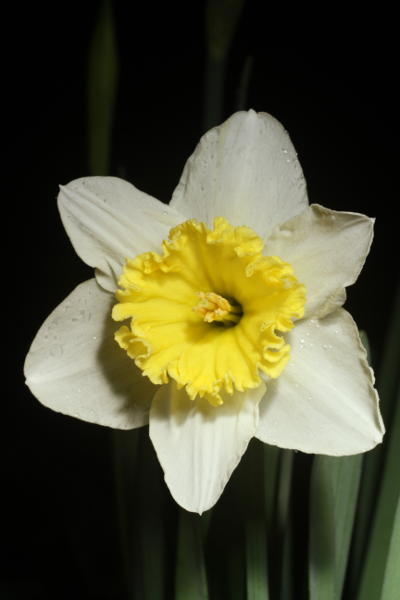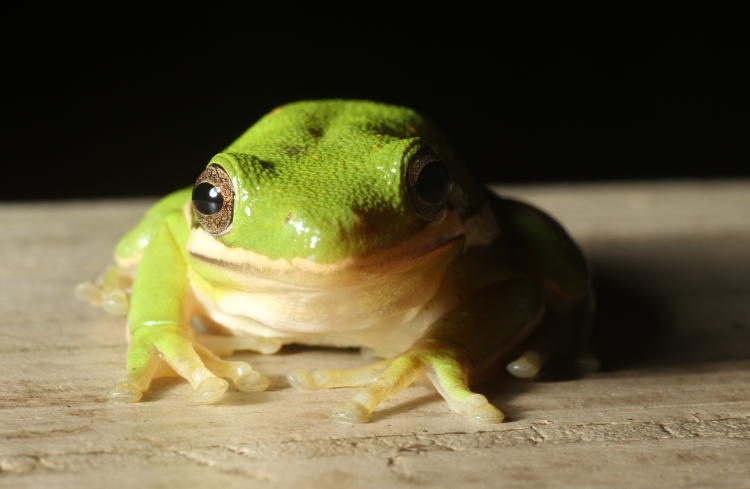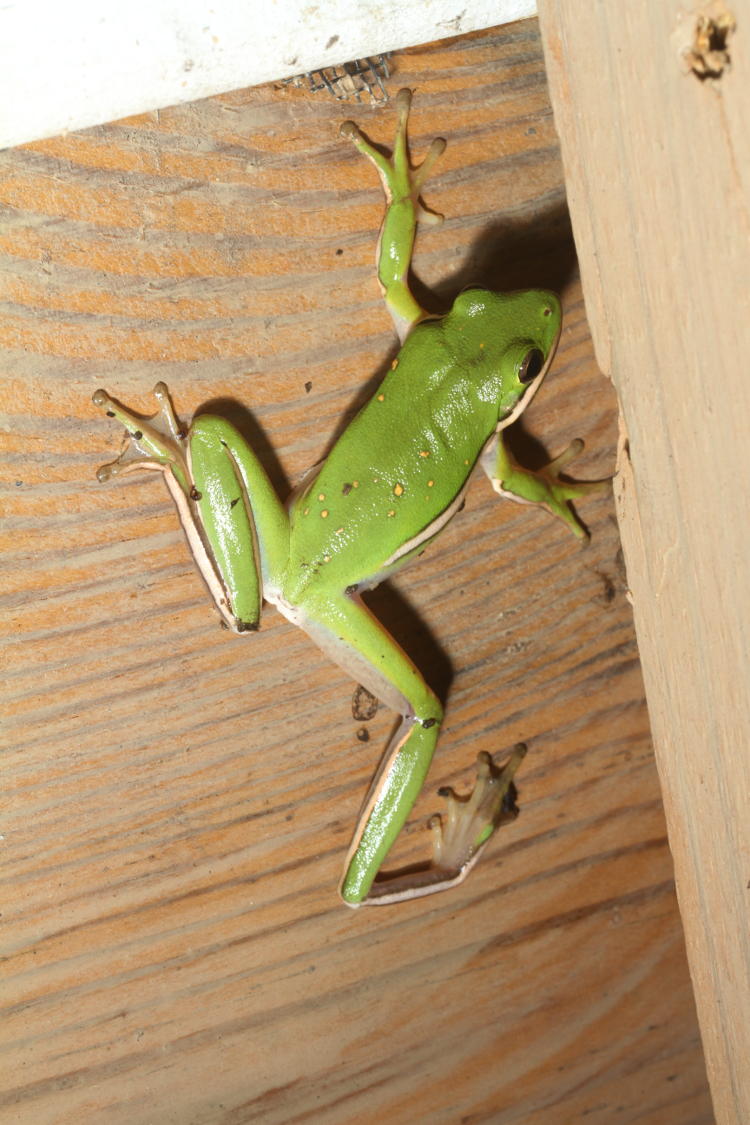 First off, I must start with the obligatory daffodil, the first in our yard at least. It opened sometime yesterday but the rain didn’t stop until that evening, so it’s a nighttime flash shot.
First off, I must start with the obligatory daffodil, the first in our yard at least. It opened sometime yesterday but the rain didn’t stop until that evening, so it’s a nighttime flash shot.
But I spent the past couple of days trying to find something to do for Darwin Day, which is today: Charles Darwin was born on this date in 1809, and of course, as a nature photographer, science enthusiast, and evolution-affirmer I should be recognizing this at least. But nothing was coming to mind, and February is naturally a bad time to be trying to find some example that helps illustrate his work, as I’ve noted before. We should be celebrating this on July 1 instead, which is the anniversary of his first presentation on natural selection in 1858.
[And I’ll take a moment to note that, roughly simultaneously, Sir Alfred Russell Wallace also tumbled to the idea of evolution by natural selection and deserves almost as much credit as Darwin; Darwin was perhaps more thorough in his treatment, but should not be considered the only person who proposed the concept. In fact, several other scientists and naturalists throughout the time period were contributing ideas and concepts, so it really was only a matter of time anyway, but hey, we’re dealing with Charles right now.]
However, at a loss for decent subjects, I turned to the ponds, the one in the backyard and the larger one nearby, and sought some subjects within. There remained very little to see, and what I did find was hard to photograph, but I made the efforts anyway.

On the surface of the water at this time of year can always be found these tiny (1-3mm) arthropods that I tend to call doodlebugs just from appearances, though I believe this is more often applied to other species. Technically they’re springtails, Class Collembola, and I believe I have several different species in the one cluster here, but they weren’t my primary subject and I’m not going to fuss about particulars. Instead, we’ll briefly pursue the naiads.

“The what?” you say, and I confidently repeat, “Naiad,” knowing damn well I only discovered this term (well, for this context) a few minutes ago. I was calling them damselfly nymphs myself, but nymph is an incorrect term, because it’s an exopterygote. So there.
[Don’t ask. Or at least, don’t ask me – I just shoots them. If you want the camera tech specs, then you can ask.]
Anyway, damselflies spent their youth in the water; the appearance we’re all familiar with is their adult, reproducing form. But as juvies, they swim around in fresh water and chase other aquatic arthropods while breathing through those feathers attached to their ass, which are actually gills. What will become their wings presently looks like a rather-ill-fitting tailcoat, but we’re going back to those gills.

Pretty snazzy, ain’t they? I know you’re jealous. The overall length of the naiad was probably in the realm of 20mm, and a single gill was no more than 4mm. I was having a devil of a time nailing sharp focus and good lighting through the aquarium glass, and eventually I stopped trying, not too enamored of my subjects to begin with. Well, except for one small aspect (which is still far from my best work.)

One of the three specimens that I had to work with showed some kind of fuzz all over it, what I’m taking to be a fungus of sorts that I’ve seen frequently before, but it was the only one holding still in a good position so it was the one I got the best frames of. And in this frame, you can clearly see what I’m taking to be the optic nerve feeding into each ommatidia (eye) cluster. I am also presuming that the larger dark bands running down the back, which continued the length of the insect, are nerve cords as well; there is no spine or internal skeleton for them to be protected within. Arthropod brains themselves are of course rather small and simplistic, but it’s possible that portions of it are visible before the head chitin gets too opaque here.
That wasn’t really enough for a post, and I was returning my water samples to the ponds when I stepped out onto the back porch and was immediately greeted by my next subject, quite unexpectedly.

Now, the past couple of days have been remarkably warm, but I also cleared ice and frost off of my car in the mornings not a week ago, so I wasn’t expecting to see any evidence of this species for another month or so. I shouldn’t have to tell you that this is a green treefrog (Hyla cinerea,) but it definitely marks the earliest that I’ve ever spotted one. According to my own criteria, this means that it’s spring now, and any snow or frosts are completely disallowed from this point on. Much better than groundhogs, for sure.

And an action pose, after I had returned my aquatic subjects to the pond and noted the splashes of two other frogs as they leapt back into the water – those were likely green frogs, not green treefrogs (I don’t name ’em,) which always overwinter in the mud at the bottom of the pond. I was inclined to consider the treefrog here as a fluke, because they definitely don’t like even cooler weather, and suspected from its location that it had holed up under the cover of the grill on the deck that they seem to be fond of. But wait!

Only a few meters away, another green treefrog was hanging out on a decorative railing. This one was 1/3 the size of the previous and much more bronze in color – which I’ve been seeing a lot lately, making me wonder if some conditions of the yard are contributing to this (there – I kinda half-assedly tied it back in to Darwin.) Regardless, either a coincidence or an indication that the green treefrogs, at least, consider the warm spell a good sign.
Emboldened by my finds, I went out poking around with the headlamp in pursuit of more subjects, but found very little. My little technique of shining a flashlight up from the undersides of the gardenia leaves did produce a hit, though.

Magnolia green jumping spiders (Lyssomanes viridis) are fairly common in this region, though small and secretive, but they have the coolest eye effect visible. They’re very fond of the undersides of leaves, where they can remain unseen but have a good shot at all those insects that take shelter thereon. You can see that the leaf is criss-crossed with web strands, and I don’t know if this is just safety draglines, something that all spiders maintain as they wander along, or if it’s an alert system for prey; jumping spiders are active stalkers and ambushers, so they don’t capture or hold prey with webs at all, but perhaps they still use webbing for ‘tripwires?’ I’ll have to do some more research.
 However, that was a nice little package of current photos to mark the day and indicate that the blog has not gone completely fallow; I’ll include this first blossom among the phlox plants from a couple days back as well, a tiny splash of color among all the browns. Here’s hoping that we really do have an early spring and I can have something more to photograph soon – I’m not holding my breath, but hey, one can dream.
However, that was a nice little package of current photos to mark the day and indicate that the blog has not gone completely fallow; I’ll include this first blossom among the phlox plants from a couple days back as well, a tiny splash of color among all the browns. Here’s hoping that we really do have an early spring and I can have something more to photograph soon – I’m not holding my breath, but hey, one can dream.




















































